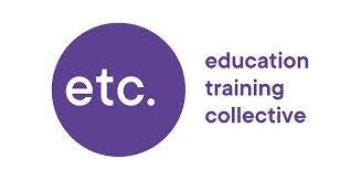College attendance isn’t what it used to be. The familiar refrain across the FE sector reflects a genuine concern. But the picture is more nuanced than a simple decline. While attendance remains a challenge, the data shows some steady, if sometimes overlooked, improvement since the pandemic.
At VLE Support we work with dozens of colleges and training providers to help them manage and interpret their learner data. This gives us a wide-angle view of what’s really happening across the system – and the signals are more encouraging than many might assume.
One area where concern rightly remains is GCSE English and maths – a perennial challenge. These resit subjects continue to see lower attendance compared to learners’ main vocational programmes. But even here, the data shows progress.
Among 16 to 18 year olds, the attendance gap between vocational learning and English and maths has been narrowing steadily since the pandemic.
In 2020-21, attendance in GCSE English was 6.4 percentage points lower than the study programme average. For maths, the gap was wider – at 7.8 points.
By 2024-25, both gaps have narrowed – although the 2024-25 data only covers until February so should be treated with some caution as attendance normally drops in spring and summer terms.
The English attendance gap now stands at 3.8 points, while maths has improved to 4 percentage points. The difference between the two subjects has remained modest with English maintaining a slight edge throughout.
Colleges have invested time and energy in re-engaging learners post-pandemic, strengthening support and adapting delivery. But data is playing a crucial role too – not just in tracking attendance but in helping identify patterns, target interventions, and measuring what’s working.
Too often, attendance is treated as a binary figure – up or down, good or bad. In reality, the story is more complex. Patterns vary by subject, by time of the week, by age group and course type. Digging into the data reveals where problems are emerging – and where they’re being solved.
While the Department for Education collects some data on FE, it is not as complete or timely as the data available for schools. Universities benefit from the Higher Education Statistics Agency (HESA) while colleges often rely on fragmented or delayed national reporting.
Yet FE providers are collecting detailed data every day on attendance, engagement, attainment and more. As a sector, we need the tools and platforms to interrogate this data nationally, to spot trends and tell stories that might otherwise be missed.
Used well, this evidence can challenge anecdotes and received wisdom, and paint a more accurate picture of what’s really happening in our classrooms.
For example, we’ve worked with providers who used attendance data to spot emerging issues in particular groups or curriculum areas, allowing them to adjust timetables, address travel barriers or strengthen pastoral support. In some cases, small tweaks have had big impacts – but only because the data revealed what wasn’t immediately obvious.
Attendance also has a significant impact on staff. Persistent absence makes it harder for teachers to plan, increases their workload, and can affect morale. A better understanding of attendance trends helps teams feel more informed and better equipped to support students, rather than constantly responding to problems after they’ve taken hold.
None of this is about quick fixes. The pressures on students are real – from the cost of living to mental health, from transport to timetabling. But when colleges have access to clear, connected data, they can move from firefighting to foresight – responding with insight rather than assumptions.
What the post-pandemic years have shown is that progress is possible. Even in the toughest areas – like English and maths resits – attendance is improving, albeit slowly. That should give the sector confidence.
The next step is to keep investing in the tools that help us understand what’s happening, and why. Good data isn’t just about compliance or reporting. It’s about knowing your learners, spotting issues early, and acting decisively.
The challenge of attendance hasn’t gone away. But the idea that it’s in freefall doesn’t hold up to scrutiny. The data tells a different story: one of steady recovery, focused effort, and sector-wide commitment. And that’s a story worth shouting about.
















Your thoughts